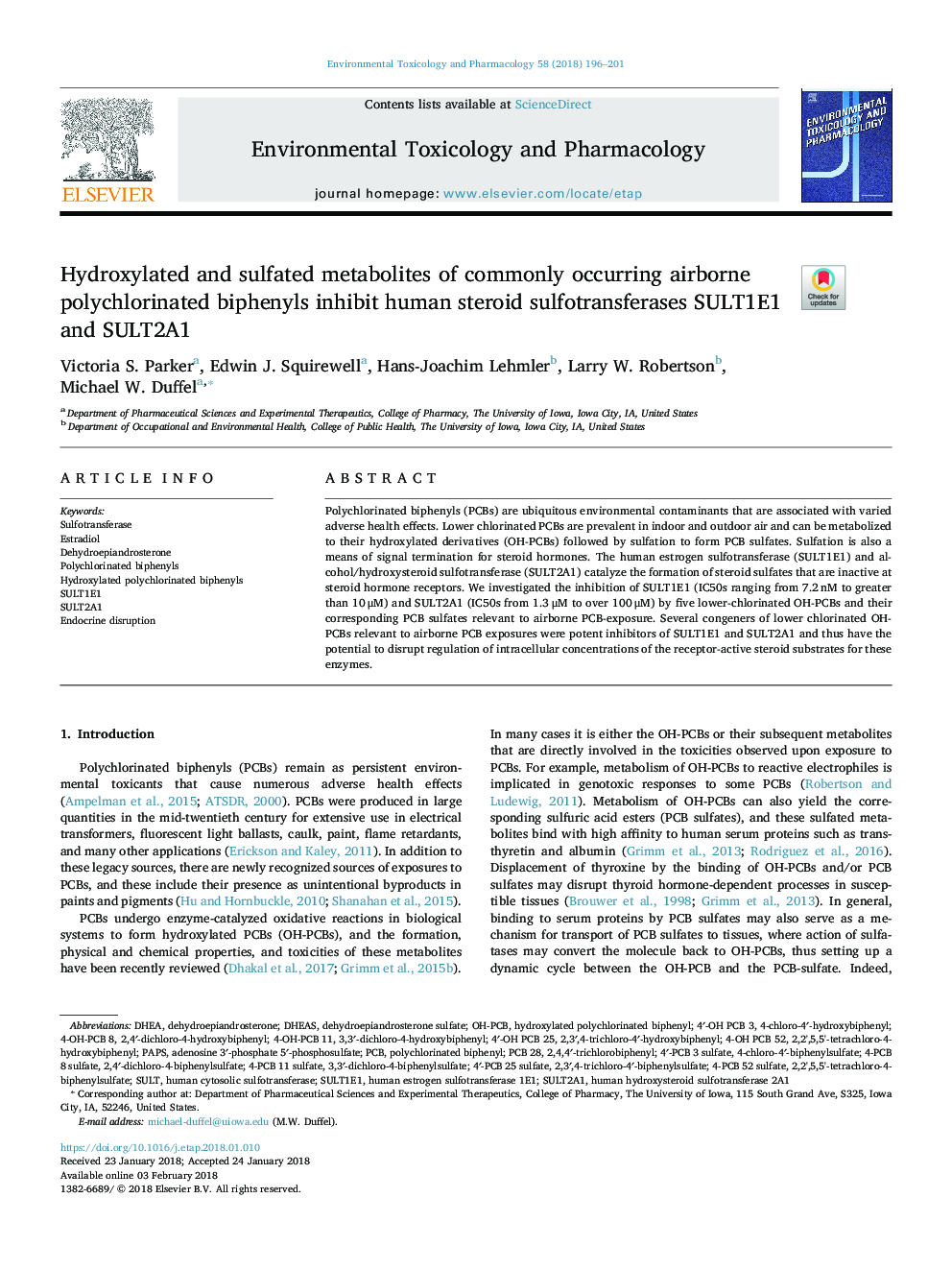| Article ID | Journal | Published Year | Pages | File Type |
|---|---|---|---|---|
| 8546065 | Environmental Toxicology and Pharmacology | 2018 | 6 Pages |
Abstract
Polychlorinated biphenyls (PCBs) are ubiquitous environmental contaminants that are associated with varied adverse health effects. Lower chlorinated PCBs are prevalent in indoor and outdoor air and can be metabolized to their hydroxylated derivatives (OH-PCBs) followed by sulfation to form PCB sulfates. Sulfation is also a means of signal termination for steroid hormones. The human estrogen sulfotransferase (SULT1E1) and alcohol/hydroxysteroid sulfotransferase (SULT2A1) catalyze the formation of steroid sulfates that are inactive at steroid hormone receptors. We investigated the inhibition of SULT1E1 (IC50s ranging from 7.2â¯nM to greater than 10â¯Î¼M) and SULT2A1 (IC50s from 1.3â¯Î¼M to over 100â¯Î¼M) by five lower-chlorinated OH-PCBs and their corresponding PCB sulfates relevant to airborne PCB-exposure. Several congeners of lower chlorinated OH-PCBs relevant to airborne PCB exposures were potent inhibitors of SULT1E1 and SULT2A1 and thus have the potential to disrupt regulation of intracellular concentrations of the receptor-active steroid substrates for these enzymes.
Keywords
PCBDHEASULT2A1SULT1E1OH-PCBdehydroepiandrosteroneSULTDHEASPAPsadenosine 3′-phosphate 5′-phosphosulfateEndocrine disruptionEstradiolPolychlorinated biphenylPolychlorinated biphenylsHydroxylated polychlorinated biphenylsdehydroepiandrosterone sulfatesulfotransferasehydroxylated polychlorinated biphenyl
Related Topics
Life Sciences
Environmental Science
Health, Toxicology and Mutagenesis
Authors
Victoria S. Parker, Edwin J. Squirewell, Hans-Joachim Lehmler, Larry W. Robertson, Michael W. Duffel,
